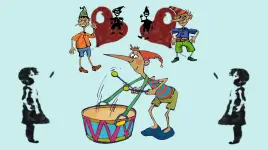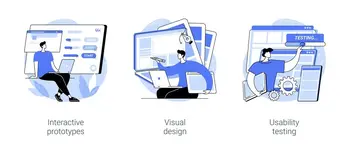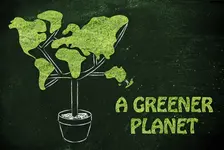
Table of contents
Visual storytelling is a way to tell stories with images and videos. It is important because people are more likely to share visual content on social media than other types of content. Visual storytelling is not just about making pretty pictures, but also about using images and videos to convey a message and engage your audience emotionally. You can Captivate Your Audience with Visual Storytelling and build a loyal following. According to a recent study,
visual content is 40 times more likely to be shared on social media
than any other type of content.
If you are interested in learning more about visual storytelling, there are many resources available online. The book “
How to Unlock the Power of Visual Storytelling in 2023+
” is a great place to start.
What is Visual Storytelling?

Visual storytelling is a way to tell a story using pictures, videos, or drawings. It can captivate audience more than text alone thus turning a good story into compelling narratives. Visual storytelling has become popular because people share visual content more often on social media than text-based content.
(a) Definition
Visual storytelling is the art of telling a story with pictures. It uses graphics, photos, and videos to connect with people, make them feel things, and get them to act. It is important because our brains are wired to process visuals. Visual storytelling can be used for marketing, education, entertainment, and journalism.
(b) Importance
Visual storytelling is important because it can make people feel things and remember things. A
study
found that visual content is 40 times more likely to be shared on social media than other types of content. This means that visual storytelling can help you reach more people.
Visual storytelling can also make complex things easier to understand. Infographics are a popular way to use visual storytelling to present data and statistics in an engaging way.
Visual storytelling is a powerful tool that can help you communicate your message in a more engaging and memorable way. It is becoming more popular because of social media, and it can be used for marketing, education, entertainment, and journalism.
The Power of Visual Storytelling
Visual storytelling is a good way for companies to talk to people. They can use pictures and videos to tell a story that will make people remember them. This can help companies get more customers and keep the ones they have.
In this section, we will talk about how visual storytelling can help companies. We will also talk about how it can make people feel.
1. Engagement

Visual storytelling is a good way to get people’s attention. Visual content is shared 40 times more on social media than text content. This is because pictures and videos are easier to understand than words. Brands can use visual storytelling to get people interested in their products or services.
2. Retention
Visual storytelling is a good way to remember information. A study found that people remember 65% of what they see, but only 10% of what they hear. This means that brands can use visual storytelling to make their message more memorable. This is especially important for businesses that want to communicate complex information in an easy-to-understand way.
3. Emotional Connection
Visual storytelling is a way to tell a story with images and videos. It can be used to connect with people emotionally. A study by
Psychology Today
found that emotions are the main reason why people do things. So, by using visual storytelling, businesses can make people feel things and create a memorable experience. This can help businesses build loyalty with their customers and create lasting relationships.
In conclusion, visual storytelling is a powerful tool that businesses can use to connect with their customers emotionally. By combining images and videos with a compelling story, businesses can create a memorable experience that will keep customers coming back.
Using Colour in Visual Storytelling

Colour is a powerful tool in visual storytelling. It can make people feel different emotions and create different moods. By understanding how people react to different colours, filmmakers and designers can use colour to tell their stories and send messages to their audience.
i. Psychology of Colour
Different colours can make people feel different things. Warm colours like red, orange, and yellow can make people feel excited and energetic. Cool colours like blue, green, and purple can make people feel calm and peaceful.
Filmmakers use colour to set the mood for a scene. For example, a horror movie might use red and orange to create a feeling of suspense or danger. A romantic movie might use blue and green to create a feeling of calmness or romance.
A
study
found that 90% of snap judgments about products are based on colour alone. This means that colour can be a powerful tool in branding and marketing. For example, a company might use red to make their product seem more exciting or appealing.
ii. Colour in Branding
Colour is an important part of branding. It can be used to create a brand identity and draw attention to certain elements of a design. For example, the colour blue is often associated with trust and reliability, so many financial institutions use blue in their branding. The colour red is often associated with excitement and passion, so many food and beverage companies use red in their branding.
Colour can also be used to create contrast and to guide the viewer’s eye to the most important elements of a design. A study by the
University of Loyola
found that colour can increase brand recognition by up to 80%. This shows that colour can be a powerful tool in creating a strong brand identity.
In conclusion, colour is an important part of visual storytelling. It can be used to create a mood, convey a message, and enhance brand identity. By understanding the psychology of colour and how it can be used in branding, filmmakers, designers, and other creators can create compelling visuals that engage and captivate their audience.
Video Production for Visual Storytelling

Visual storytelling is using pictures and videos to tell a story. Video production is an important part of visual storytelling because it lets you make videos that tell a story and leave a lasting impression. In this section, we will look at different types of videos that can be used for visual storytelling and share some tips for making good videos.
(a) Types of Videos
There are many kinds of videos that can be used to tell stories. Each kind has its own special way of telling a story. Here are some of the most common kinds of videos used for visual storytelling:
Explainer videos: These videos explain things in a simple and fun way. They are often short and animated, and they use easy-to-understand language and pictures.
Brand videos: These videos show what a brand is all about. They often feature real people and places, and they can be longer than explainer videos.
Customer testimonial videos: These videos show what real customers think about a brand or product. They can be a great way to build trust with potential customers.
Product demo videos: These videos show how a product works. They can be used to introduce new products or to help customers learn how to use a product.
(b) Tips for Effective Video Production
Creating effective videos for visual storytelling requires careful planning and execution. Here are some tips to help you produce compelling videos that engage your audience:
Define your message and audience: Before you start producing your video, make sure you have a clear message and a defined target audience. This will help you create a video that resonates with your viewers and delivers your message effectively.
Use high-quality equipment: The quality of your video can have a significant impact on how your audience perceives your brand. Invest in high-quality equipment, including cameras, lighting, and sound equipment, to ensure your video looks and sounds professional.
Keep it short and engaging: Attention spans are short, so make sure your video is concise, engaging, and to the point. Try to keep your video under two minutes and use visuals and storytelling techniques to keep your audience engaged.
Include a call-to-action: Your video should have a clear call-to-action that tells your viewers what to do next. Whether it’s visiting your website, subscribing to your channel, or making a purchase, make sure your call-to-action is clear and compelling.
Visual storytelling through video production is an effective way to engage your audience and convey your message. By using the right types of videos and following these tips for effective video production, you can create compelling videos that leave a lasting impression on your viewers. To learn more about visual storytelling and video production, check out these articles: How to Unlock the Power of Visual Storytelling in 2023 and The Art of Visual Storytelling.
Animation in Visual Storytelling

Animation is a powerful tool in visual storytelling that can help bring stories to life. Through the use of moving images, animation can convey complex ideas and emotions in a way that static images cannot. In this section, we will explore the types of animation used in visual storytelling and the benefits of using animation in your storytelling.
i. Types of Animation
There are several types of animation used in visual storytelling. These include:
2D Animation: This is the most common type of animation used in visual storytelling. It involves creating characters and backgrounds in a two-dimensional space and animating them frame-by-frame to create the illusion of movement.
3D Animation: This type of animation involves creating characters and objects in a three-dimensional space and animating them using computer software.
Stop Motion Animation: This type of animation involves creating physical models or puppets and manipulating them frame-by-frame to create the illusion of movement.
ii. Benefits of Animation

There are several benefits to using animation in visual storytelling. These include:
Increased Engagement: Animation can capture the viewer’s attention and keep them engaged throughout the story.
Emotional Impact: Animation can convey complex emotions and ideas in a way that static images cannot.
Flexibility: Animation allows you to create any scene or character you can imagine, giving you complete creative freedom.
Increased Retention: Studies have shown that people remember information better when it is presented in an animated format.
According to a
study
, animated videos have a 20% higher click-through rate than static images. This shows that animation can be a powerful tool for getting your message across.
In conclusion, animation is a powerful tool in visual storytelling that can help bring stories to life and create emotional connections with viewers. By using the right type of animation and incorporating it effectively into your story, you can create a memorable and impactful visual experience for your audience.
Visual Storytelling in Presentations

Visual storytelling is a powerful tool that can be used in various forms of communication, including presentations. Incorporating visual elements in presentations can make them more engaging and memorable for the audience. In this section, we will explore how to use visual storytelling in presentations effectively.
1. Designing Slides
Designing slides is an essential part of creating a visually appealing presentation. Here are some tips to help you create effective slides:
Use high-quality images: Images are a crucial part of visual storytelling. Use high-quality, relevant images that support your message and enhance the overall look of your presentation.
Keep it simple: Avoid cluttering your slides with too much information. Use bullet points, charts, and graphs to convey your message effectively.
Use consistent design: Consistency in design is essential for creating a cohesive presentation. Use the same font, colour scheme, and design elements throughout your presentation.
Use animations and transitions: Animations and transitions can make your presentation more engaging and dynamic. Use them sparingly to avoid overwhelming your audience.
2. Delivering a Compelling Presentation
Designing visually appealing slides is only half the battle. Delivering a compelling presentation is equally important. Here are some tips to help you deliver a compelling presentation:
Practice: Practice your presentation several times to ensure that you are comfortable with the material and can deliver it confidently.
Use body language: Body language can convey confidence and enthusiasm to your audience. Use gestures and facial expressions to emphasize key points.
Engage with your audience: Engage with your audience by asking questions, encouraging participation, and using humour where appropriate.
Use storytelling techniques: Use storytelling techniques to make your presentation more engaging and memorable. Incorporate anecdotes and examples that support your message.
According to a study by Prezi, incorporating visual elements in presentations can increase audience engagement. Therefore, using visual storytelling in presentations can be an effective way to convey your message and engage your audience.
In conclusion, incorporating visual storytelling in presentations can make them more engaging and memorable for the audience. By following the tips outlined in this section, you can design visually appealing slides and deliver a compelling presentation.
3. Visual Storytelling in Social Media Posts

Visual storytelling is an effective way to engage and connect with your audience on social media. With the rise of visual content, it is important to understand how to use visuals to tell stories and convey messages effectively. In this section, we will discuss the types of posts and best practices for visual storytelling in social media.
(a) Types of Posts
There are several types of posts that can be used for visual storytelling on social media. These include:
Images: Images are the most common type of visual content used in social media posts. They can be used to showcase products, services, or events, as well as to convey emotions and tell stories.
Videos: Videos are becoming increasingly popular on social media. They can be used to showcase behind-the-scenes footage, product demonstrations, or customer testimonials.
Infographics: Infographics are a great way to present data and statistics in a visually appealing way. They can be used to explain complex concepts or to provide information in an easy-to-understand format.
User-generated content (UGC): UGC is content created by users, such as photos or videos, that can be shared on social media. UGC is a great way to showcase your brand and engage with your audience.
(b) Best Practices
To effectively use visual storytelling in social media posts, there are several best practices to keep in mind:
Be consistent: Use consistent branding and messaging across all visual content. This will help to establish your brand and make it more recognizable.
Keep it simple: Use simple visuals and messaging to convey your message. Avoid cluttered designs or complicated language.
Tell a story: Use visuals to tell a story that will resonate with your audience. This will help to create an emotional connection and make your content more memorable.
Be authentic: Use authentic visuals and messaging that accurately represent your brand and values. Avoid using stock photos or generic messaging.
According to a
study
, visual content is 40 times more likely to be shared on social media than other types of content. This highlights the importance of visual storytelling in social media posts. By following these best practices and using the right types of posts, you can effectively use visual storytelling to engage and connect with your audience on social media.
The Importance of Size in Visual Storytelling

Visual storytelling is a powerful tool that can help businesses communicate their message effectively. In the digital age, where attention spans are short and competition for eyeballs is fierce, visual storytelling can help brands stand out and engage their audience. However, simply creating visual content is not enough. The size of the content also plays a crucial role in the success of visual storytelling.
i. Choosing the Right Size
Choosing the right size for visual content is important because it can affect how the content is perceived and received by the audience. For example, a large image can be attention-grabbing, but it can also be overwhelming if it is too big. On the other hand, a small image may not have the same impact as a larger one, but it can be more appropriate for certain platforms.
When choosing the size of visual content, it is important to consider the platform where it will be published. For example, images on social media platforms like Instagram and Facebook should be optimized for mobile devices. According to Neil Chase Film, square images with a size of 1080 x 1080 pixels are ideal for Instagram, while Facebook images should be 1200 x 628 pixels.
ii. Best Practices for Different Platforms
Different platforms have different requirements when it comes to the size of visual content. Here are some best practices for different platforms:
- Website: According to Michigan Creative, the ideal size for website images is 1200 x 628 pixels. This size is also suitable for sharing on social media platforms like Facebook and Twitter.
- Instagram: As mentioned earlier, square images with a size of 1080 x 1080 pixels are ideal for Instagram. However, Instagram also allows portrait and landscape images with a maximum size of 1080 pixels wide and 1350 pixels tall.
- Facebook: Facebook images should be 1200 x 628 pixels. However, Facebook also allows images with a size of up to 2048 x 2048 pixels.
- Twitter: The ideal size for Twitter images is 1024 x 512 pixels. However, Twitter also allows images with a size of up to 4096 x 4096 pixels.
In addition to the size of the visual content, it is also important to consider other factors like the quality of the image, the message it conveys, and the target audience. By following best practices and choosing the right size for visual content, businesses can create compelling visual stories that resonate with their audience and drive engagement.















